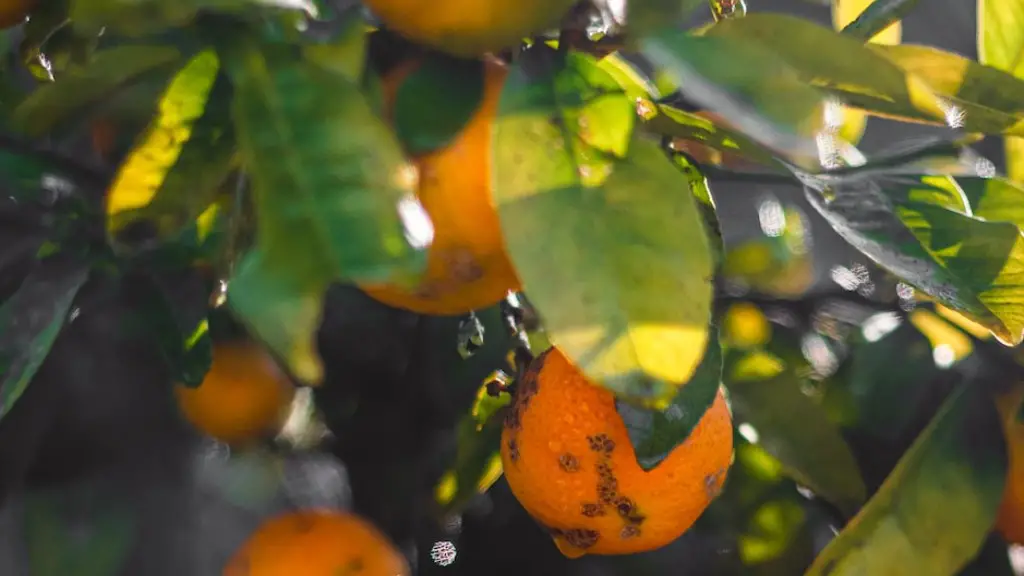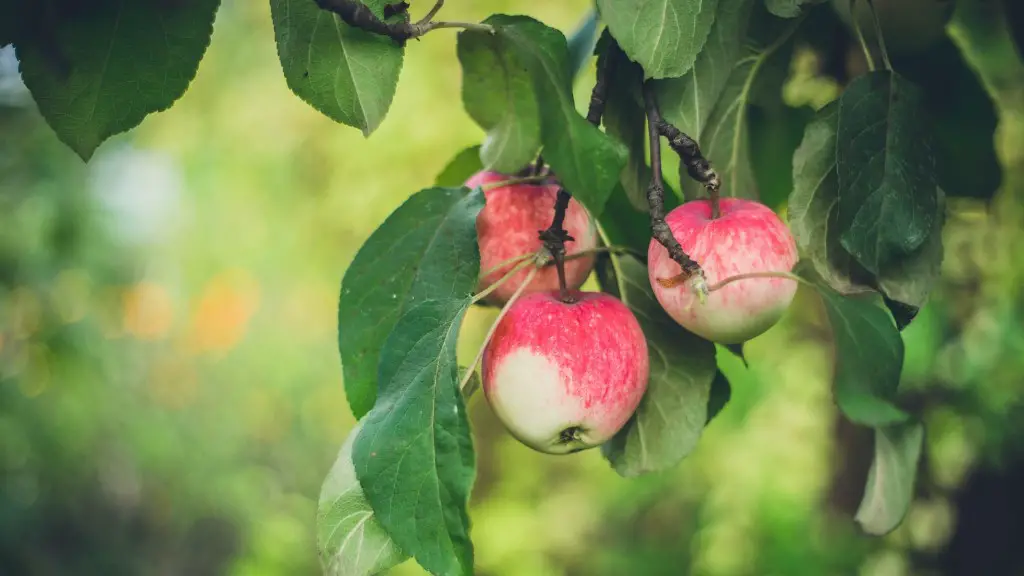From Seeds To Saplings: Planting A King Palm Tree
King Palm trees are a majestic addition to any backyard, but knowing how to plant a King Palm tree can be a tricky task. Fortunately, with a bit of patience, you can easily learn how to get these iconic trees to thrive in your landscape.
Before you get started, it’s important to understand the life cycle of the King Palm tree. King Palm trees are monocots, meaning they produce flowers with a single seed. As they grow and bloom, the King Palm tree produces hundreds of seeds. This seeds can be harvested and dispersed in your yard.
When the right conditions are present, the seeds germinate and eventually become a sapling. Most King Palm tree saplings emerge from the soil within a few weeks, although the process can take several months in some cases. The saplings develop slowly and take many years to reach full maturity.
In order to plant a King Palm tree from a seed, you’ll need to prepare the area you’ve chosen to put it in, as well as the actual seed itself. To create the perfect habitat for your King Palm tree, it’s important to prepare the soil properly. The best soil for King Palm trees is well-draining, sandy loam soil that is slightly acidic.
You’ll also need to collect the King Palm tree seeds, which should be done in late summer or fall when the plant is in full bloom. Once the seeds have been gathered, they need to be cleansed and rinsed in water and then soaked in a solution of household bleach and hot water. The ratio should be one part bleach to 20 parts hot water and the seeds should be immersed in the solution for at least one hour.
Afterwards, you’ll need to plant the seeds in a pot filled with the aforementioned soil. The pot should be filled three-quarters of the way with the soil and the seeds should be placed 1–2 inches below the surface and lightly covered. The pot should then be placed in a warm, sunny spot. It’s important to keep the soil moist, but not saturated.
The seeds should take about three months to germinate. Once germinated, the saplings will need to be moved to the ground in the prepared area you have chosen. When planting King Palm trees in the ground, make sure to mix in a generous amount of compost and fertilizer with the soil. This practice will ensure the King Palm tree has all the nutrients it needs to grow healthy and strong.
Once the sapling is in the ground, you should water it deeply and often. During the first month, it should be watered twice a week. Additionally, it’s important to mulch around the tree and keep a few inches of mulch around the base of the tree. This helps keep the roots cool and fed with nutrients during the hot summer months.
From Saplings To Trees: Caring For A King Palm Tree
Once the King Palm tree has taken root, it’s important to continue caring for it to ensure it has a healthy and full life. One of the most important aspects of taking care of a King Palm tree is to make sure it gets an adequate amount of water. Throughout the growing season, the tree should be watered 1–2 times a week to ensure it is getting enough hydration. During the hot summer months, it should be watered more often.
Fertilizing a King Palm tree is also an important part of its care. As King Palm trees grow and age, they become increasingly dependent on fertilizers high in nitrogen and potash. The best way to fertilize is to use a slow-release, granulated fertilizer in the spring and again in the late summer. Additionally, it’s important to apply a liquid fertilizer once every 2–3 weeks.
Pruning is also an important part of caring for a King Palm tree. Pruning helps to keep the tree healthy and reduces the risk of disease and pest problems. Due to their large size, King Palm trees are more prone to storm damage, so it’s important to keep an eye out for any broken or dead branches and prune them off. Pruning should be done in the winter when the tree is dormant.
It’s also important to keep the King Palm tree’s soil pH in check. King Palm trees prefer acidic soil with a pH of 6.5–7.5. Monitoring the soil is important and can be done with a soil test. If the pH is too low, you can add lime to the soil to raise the pH. If it’s too high, you can add sulfur or compost to lower the pH.
Finally, King Palm trees require a lot of light to stay healthy and produce new growth. Place the tree in a location that has a minimum of 8 hours of full sun a day. Also, make sure to keep the area around the tree clear of any weeds so that the tree can get adequate light and nutrients.
Winterizing A King Palm Tree
Once the cold weather of winter sets in, it’s important to prepare your King Palm tree for the chill. The first step is to protect the tree’s roots from the cold air. You can do this by adding a layer of mulch around the base of the tree. This will help to keep the roots insulated and prevent them from freezing.
Meanwhile, the cold weather can cause stress on the King Palm tree’s leaves. To prevent this, it’s important to gauge how cold it’s going to get in your region and cover the tree with a frost blanket when the temperature dips below freezing. This will help to protect the leaves and prevent any damage.
Finally, during the winter months, it’s important to reduce the amount you’re watering the tree to just one time a week. This will help to reduce stress on the tree and also help to conserve water.
Protecting A King Palm Tree
There are a few things you should keep in mind when it comes to keeping your King Palm tree safe and healthy. One of the most important things is to keep an eye out for pests. Some common pests that can attack King Palm trees include aphids, scales, and mealybugs. Inspect the tree regularly to look for signs of infestation and treat it as soon as possible.
Additionally, it’s important to protect the tree from any damage that may be caused by wind, animals, or other natural disasters. Keeping the tree away from any potential hazards is the best way to ensure that your King Palm tree is safe and healthy.
In terms of disease prevention, it’s always important to keep an eye out for any signs of disease and treat it immediately. Some of the most common diseases that affect King Palm trees include leaf spot and root rot. In general, staying vigilant and reacting quickly to any signs of trouble can go a long way in keeping your King Palm tree healthy and strong.
Transplanting A King Palm Tree
In some cases, you may need to transplant an established King Palm tree to a different area of your yard. To do this, you should start by preparing the new location. Make sure that the soil is prepped and the hole is twice as wide and twice as deep as the rootball of the tree.
Once the new location is prepped, you should dig up the existing King Palm tree and its rootball carefully. Wrap the rootball in burlap and moisten it so that the tree’s roots don’t dry out. Finally, place the tree in the new hole the same way it was planted in the old one and fill it in with soil.
After the transplant, it’s important to water the tree deeply and often. Give it a few weeks and then slowly reduce the water as the tree takes root. Also, make sure to keep the area around the tree clear of weeds and mulch as needed.
Harvesting Kings Palm Tree Seeds
If you’re looking to harvest King Palm tree seeds, the best time to do so is in the late summer or fall when the tree is in full bloom. To gather the seeds, you should use a stepladder to climb up to the seed clusters. Once up there, you should use a cutting tool to cut the clusters off and place the whole clusters in a bucket or bag.
When the job is finished, you should bring the clusters down and take them to a cool, dry place. Place the clusters on a flat surface and spread them out in a thin, even layer. Allow them to dry for at least two weeks, stirring them every 3–4 days to ensure even drying and prevent any fungus from growing.
When the clusters are dry, you can begin to separate the seeds. The easiest way to do this is to rub the clusters between your hands and allow the seeds to fall to the ground. Once the process is complete, you can store the seeds in a cool, dry place for up to one year.
Landscaping With King Palm Trees
King Palm trees are a great addition to any landscape, and there are many ways to incorporate them into your yard. For instance, they can be planted as a statement piece near an entryway or placed near a swimming pool as an eye-catching accent. They can also be used as a privacy hedge or planted in a row along a driveway.
When it comes to planting King Palm trees, it’s important to select the right location. It’s best to plant the trees in an area that receives full sun and is slightly shielded from strong winds. Additionally, if you’re planting several King Palm trees together, make sure to leave enough space for each one to grow.
Finally, King Palm trees pair well with other plants and trees. Dwarf palms, Queen palms, citrus trees, and tropical plants are a great way to create a beautiful, lush landscape. As your King Palm tree grows, you can easily add other plants around it to create a vibrant tropical oasis.




